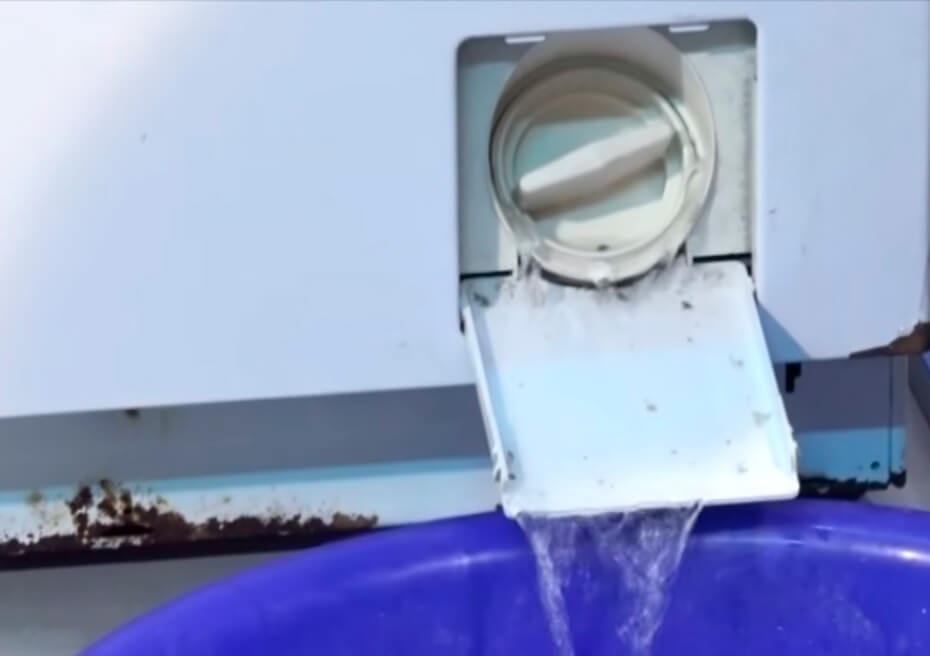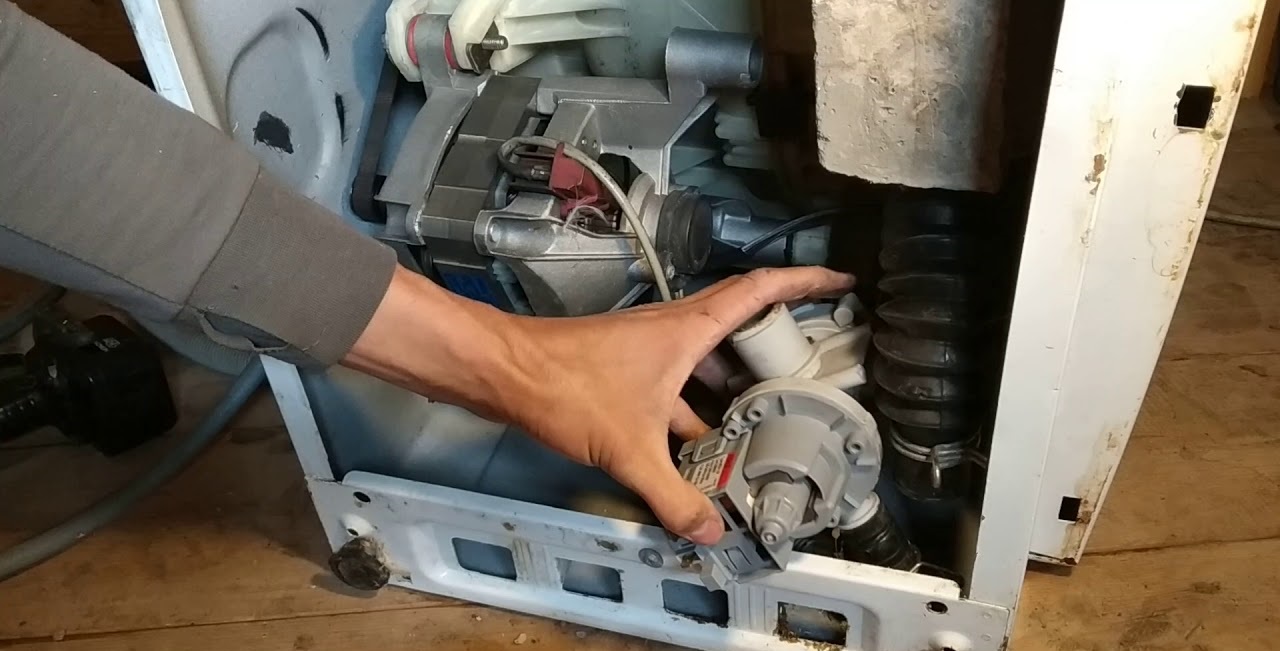Haier washing machine does not drain water
 If your Haier washing machine does not drain the water, your washing will be in jeopardy. The situation is common and unpleasant - you will have to put up with delays, wet or locked laundry in the drum. Fortunately, you can deal with the problem without calling a repairman. We suggest you figure out what problems are hidden behind difficult drainage and how to fix them. Let's consider in detail who is to blame and what to do.
If your Haier washing machine does not drain the water, your washing will be in jeopardy. The situation is common and unpleasant - you will have to put up with delays, wet or locked laundry in the drum. Fortunately, you can deal with the problem without calling a repairman. We suggest you figure out what problems are hidden behind difficult drainage and how to fix them. Let's consider in detail who is to blame and what to do.
"Symptoms" of a malfunction
It is not difficult to understand that the washing machine has stopped draining water. Her behavior will change dramatically, and certain “symptoms” will appear. So, you can suspect problems with drainage based on the following signs:
- The washing program is delayed;
- the drain, which lasts 3-4 minutes, slows down greatly;
- the running mode is reset, the washing machine freezes;
- the machine stops at the draining stage;
- the washing machine drains water intermittently: sometimes there is a drain, sometimes there is not;
- Haier washes normally, but when switching to rinse it “stands up”;
- Spin is not activated.

Several faults at once lead to interruptions in drainage: from a simple blockage to a difficult-to-repair failure of the control board. As a rule, the latter problem is rare. More often, slow emptying of the drum occurs for the following reasons:
- the pipe leading from the pump to the tank is clogged;
- the pump is dirty or broken;
- the garbage filter is clogged;
- there is an external blockage (in the siphon or sewer);
- The drain hose does not allow water to pass through.
Modern Haier washing machines make it easier to find the cause of problematic drainage.The built-in self-diagnosis system automatically detects a problem and reports it to the user through an error code on the display or a corresponding indication. All that remains is to look at the instructions, decipher the “message” and understand where the fault is and what to do to fix it.
Let's clear the drainage path of dirt
If you have problems with drainage, the first thing you will have to do is clean the drain. It is blockages that most often lead to difficult drainage, preventing liquid from leaving the tank. You can inspect and clean the “drain tract” yourself. The main thing is to act consistently and remember safety precautions.
Drainage diagnostics begins by disconnecting the washing machine from communications. It is necessary to disconnect Haier from electricity and water supply to avoid problems when disassembling and moving the equipment. Next, we get to the garbage filter and drain the remaining water in the machine:
- pry open the technical hatch door with a screwdriver;
- release the latch and move the panel to the side;
- tilt the body back 3-4 cm;
- place a container under the filter to collect water and lay down rags;

- slowly unscrew the nozzle;
- We wait until all the water leaves the tank.
The next step is to remove the filter completely. The removed nozzle must be washed to remove adhering dirt and deposits. First, large debris is removed by hand, then scale and other debris are removed with a dish sponge. If the layer of impurity does not give in, then we move on to the “heavy artillery”: a toothbrush or soaking in a lemon solution. In any case, only warm water is used when cleaning - boiling water will deform the plastic and rubber.
Do not wash the garbage filter in hot water - this will damage the nozzle!
Along with the filter, we also clean its seat.Using the same sponge or brush, we go over the walls of the “nest”, removing all the adhering debris. After we finish the repair: screw the nozzle into the grooves, return the washer to its original position and start the test cycle. If the drain is restored, then the problem is solved.
Sewage pump
After cleaning the filter, the drain has not returned? Then we continue to diagnose the drainage. We again disconnect the equipment from communications, remove the false panel and unscrew the “trash can”. It is necessary to check the serviceability of the pump. First of all, we look to see if the impeller is jammed. This pump element must unwind and set the direction of the pumped water. But its blades are often blocked by wound hair or a stuck coin. As a result, the pump stops and the drainage stops.
You need to shine a flashlight through the hole freed from the filter and inspect the pump. If large debris is noticeable, then clean it from the impeller. We definitely try to spin the blades: free rotation will indicate serviceability, and difficult rotation will indicate obvious damage. Diagnosis by “electronic check” of drainage continues. You need to connect the washing machine to the power supply, run the spin program and evaluate the behavior of the pump. If the Haier engine hums and the impeller remains motionless, the pump is broken.
Repairing the pump is irrational - it’s cheaper and easier to buy a new one and replace the old one. There shouldn’t be any difficulties finding an analogue. Haier components are available from online suppliers and most hardware stores. The main thing is to tell the consultant the serial number of the washing machine or present the pump removed from the machine as a sample. The pump is removed according to the following instructions:
- Place the washing machine disconnected from communications on its left side (on the side where the powder receptacle is located);
- remove the tray, if provided;

- find the pump fixed on the cochlea;
- disconnect the connected wiring and pipes from the device;
- unscrew the retaining bolts;
- remove from the seat;
- clean the snail from dirt.
The new pump is installed in the same way, only in the reverse order. We place the device in its seat, fix it with fasteners and connect the previously removed wiring and pipes. Then we screw the tray on, lift the Haier and start the wash. If the repair does not help, contact the service.
Interesting:
1 reader comment





















Helped